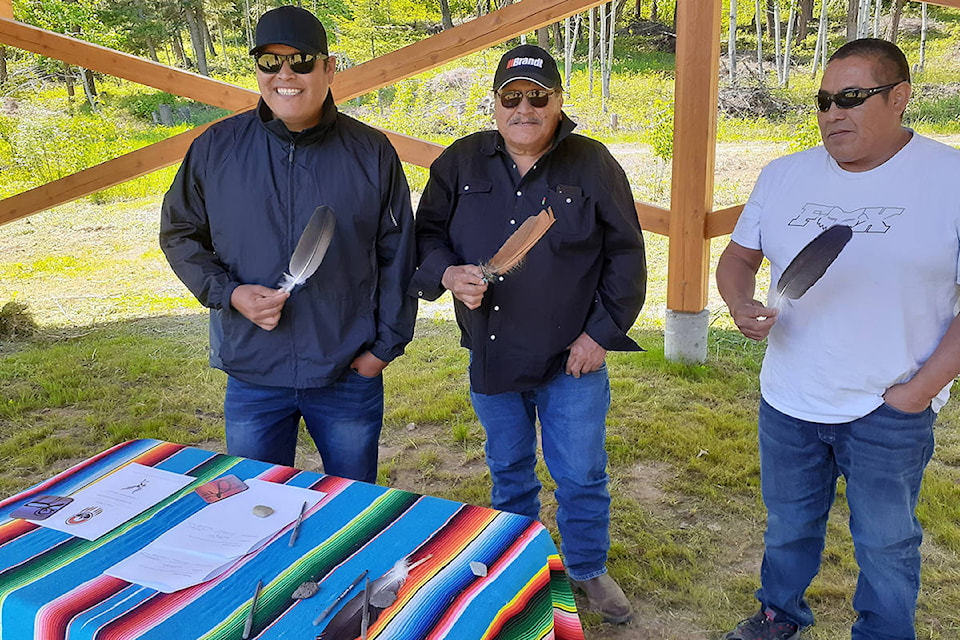A First Nations community situated along both sides of the Fraser River in B.C.’s Interior is taking steps to protect water in their traditional territory - namely the Fraser River.
?Esdilagh (Alexandria) First Nation leaders said they enacted the historic Elhdaqox Dechen Ts’edilhtan (Sturgeon River Law) Wednesday, May 27 to protect the health and future of its community.
Councillor Chad Stump said they had no choice but to implement the law which requires any proposed activities that could impact the Fraser (Sturgeon) River to have the nation’s free, prior and informed consent.
“Industry has forced us to develop a law within our community in order to help suffice and deal with some of the concerns and the problems that have come from industry and the government being in place,” he said.
Stump called the discharge of pollutants into the Fraser River a ‘huge problem.’
Read More: Threats to the Fraser River at ‘new zenith,’ says river conservationist
Feeding Indigenous peoples for thousands of years, the mighty river is no longer a reliable source of sustenance as fish stocks are in the throes of collapse, he added.
“They have been closing fish stocks yearly now for the last 15 years,” Stump said. “We’re severely limited on resources in the river, we’re getting surrounded by private lands that we can’t hunt on the river on anymore so it’s just degrading the whole river system, and not only ?Esdilagh but many First Nations up and down the river are facing this problem of degradation of the Fraser River.”
Stump said that was one of the main reasons ?Esdilagh acted swiftly on creating the law.
Chief Roy Stump said he remembers the Fraser River once being clear and green before industry dotted the landscape.
“But now today the river is all muddy from all the industry along the river as far north as past Prince George,” he said. “So we’re doing it for our generations to come, our children, our youth. We’re trying to have something for them when we’re not here anymore.”
Read More: High tech fish transport system set up to ‘whoosh’ salmon past Big Bar landslide
Councillor Howard Johnny said he has been concerned by industry dumping pollutants, which build up over time, into the river.
“This law we put in place so there is no more damage done to our river and protect people from using the river to dilute pollutants,” he said. “We’re hoping to protect our waterways.”
The Elhdaqox Dechen Ts’edilhtan is a component of the broader Tsilhqot’in laws governing lands and water. It applies to all waters in ?Esdilagh territory.
“We’re front and centre when it comes to ?Esdilagh territory and we need to be consulted with,” Chad Stump said.
“We need to be talking in good terms regarding the future of the Fraser River, and we need to jointly make decisions regarding the Fraser River because at the end of the day ?Esdilagh is going to be here forever and we have to be able to utilize the Fraser River in a manner that suits our health that is currently at stake with what is going on in this river.”
The law was endorsed by the Tsilhqot’in Nation on May 28.
Tsilhqot’in National Government tribal chair Chief Joe Alphonse said the Nation is currently appealing a B.C. Ministry of Environment permit amendment which allows Gibraltar Mines. Ltd. to increase the rate of its effluent discharge by 50 percent, sending tailings effluent straight from its tailings pond to the Fraser River.
As one of six communities comprising the Tsilhqot’in Nation, ?Esdilagh First Nation leaders said they can assert their rights and title over their territory since the 2014 Supreme Court decision which declared Aboriginal title for the first time in Canadian history, in the homeland of the Tsilhqot’in people.
(This article has been updated for clarity)
Do you have a comment about this story? email:
rebecca.dyok@wltribune.com
Like us on Facebook and follow us on Twitter.
